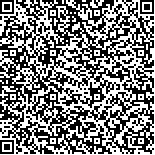本文已被:浏览 1049次 下载 549次
投稿时间:2018-08-30 网络发布日期:2019-03-22
投稿时间:2018-08-30 网络发布日期:2019-03-22
中文摘要: 目的 采用肺静脉微创隔离消融术复合心内膜标测下射频消融术治疗顽固性房颤患者,探讨影响患者心律失常复发的相关因素。方法 选取2014年3月至2016年12月行肺静脉微创隔离消融术复合心内膜标测下射频消融术治疗的顽固性房颤患者102例,对患者随访12个月,记录患者的临床资料及心律失常复发情况,分析影响患者心率失常复发的相关因素。结果 单因素Cox回归分析表明,年龄>65岁、左心房容积>165 ml、外科治疗后非窦性心律、可诱导性房颤但可自行终止是影响患者生存且无心律失常复发的危险因素(P<0.05),无诱导性房颤是其保护性因素(P<0.05);多因素Cox回归分析表明,左心房容积>165 ml、外科治疗后非窦性心律、可诱导性房颤(诱导房颤持续时间>30 s,包括可自行恢复、持续性房颤者)是影响患者生存且无心律失常复发的危险因素(P<0.05)。结论 复合射频消融能有效治疗顽固性房颤,且心房容积>165 ml、外科治疗后非窦性心律、可诱导性房颤是影响患者生存且无心律失常复发的危险因素。
Abstract:Objective To explore the related factors of arrhythmia recurrence in patients with refractory atrial fibrillation (AF) treated by minimally invasive pulmonary vein isolation combined with radiofrequency ablation under endocardial mapping. Methods A total of 102 refractory AF patients, who received pulmonary vein minimally invasive isolation combined with radiofrequency ablation under endocardial mapping from March 2014 to December 2016, were selected and were followed up for 12 months.The clinical data and the recurrence of arrhythmia were recorded to investigate the related factors for arrhythmia recurrence. Results Univariate Cox regression analysis showed that age more than 65 years old, left atrial volume (> 165 ml), non-sinus rhythm after surgical treatment, inducible atrial fibrillation with self-termination were the risk factors affecting the arrhythmia recurrence of patients (P<0.05), and non-inducible atrial fibrillation was the protective factor for arrhythmia recurrence of patients (P<0.05).Multivariate Cox regression analysis showed that left atrial volume more than 165 ml, non-sinus rhythm after surgery, and inducible atrial fibrillation with self-terminating or persistence (more than 30 s) are the risk factors for the arrhythmia recurrence of patients (P<0.05). Conclusion Minimally invasive pulmonary vein isolation combined with radiofrequency ablation can effectively treat refractory atrial fibrillation.Non-sinus rhythm and inducible atrial fibrillation with atrial volume > 165 ml after surgical treatment are the risk factors for arrhythmia recurrence.
文章编号: 中图分类号:R 541.7 文献标志码:B
基金项目:
附件
引用文本:
杨倩倩,唐桂梅,芦颜美.顽固性房颤行肺静脉微创隔离消融术复合心内膜标测下射频消融术心律失常复发的相关因素[J].中国临床研究,2019,32(3):354-357.
杨倩倩,唐桂梅,芦颜美.顽固性房颤行肺静脉微创隔离消融术复合心内膜标测下射频消融术心律失常复发的相关因素[J].中国临床研究,2019,32(3):354-357.
